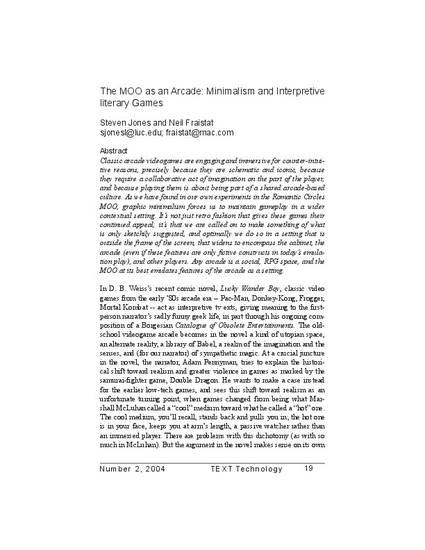
Classic arcade videogames are engaging and immersive for counter-intuitive reasons, precisely because they are schematic and iconic, because they require a collaborative act of imagination on the part of the player, and because playing them is about being part of a shared arcade-based culture. As we have found in our own experiments in the Romantic Circles MOO, graphic minimalism forces us to maintain gameplay in a wider contextual setting. It’s not just retro fashion that gives these games their continued appeal; it’s that we are called on to make something of what is only sketchily suggested, and optimally we do so in a setting that is outside the frame of the screen, that widens to encompass the cabinet, the arcade (even if these features are only fictive constructs in today’s emulation play), and other players. Any arcade is a social, RPG space, and the MOO at its best emulates features of the arcade as a setting.
Text Technology, v. 13, no. 2, p. 19-26
Available at: http://works.bepress.com/steven-jones/45/
